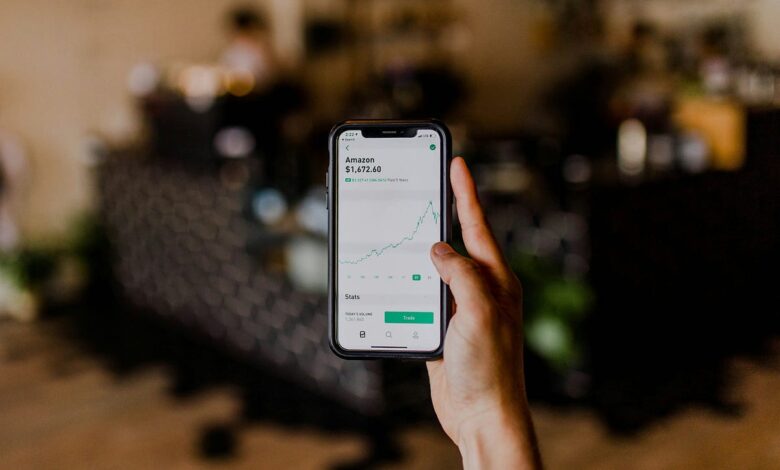Fintech Deconstrued: What is Financial Technology? | by Emmanuel Olaleye | Apr, 2024

Fintech Deconstrued: What is Financial Technology?
“Fintech is the bridge between traditional finance and the digital economy” – Arvind Sankharan (Fintech Investment Specialist (Asian Development Bank).
In the year 2009, if you lived in NYC and wanted to get money to someone in Arkansas, you’d have to take the following routes,
- Physically go to your bank and request a wire transfer.
- Mail a check which could take days to get to it’s recipient.
- You could also use a money order which you would need to purchase from a post office or a financial institution.
Let’s not even delve into how stressful it was to trade stocks( Wolf of wall street style) ,invest in shares or obtain credit loans.
Back in the day, financial transactions required you to get off your behind and make payments or purchases physically .Today, we’re in the word of lazy consumer finance. Fintech companies have combined financial services with technology to create easy,swift and efficient financial transactions. Using sophisticated technology and softwares, fintech has evolved the way financial services are rendered.
But let’s bare it all down to the bone…
Fintech (coined from finance and technology) is the synchronization of technology and traditional financial services to provide seamless finance services to consumers via the use of software.
Fintech is simply a set of tools that lets us use our computers and mobile phones to transact with money easily.
It makes it easier to pay for things online, keep track of money ,borrow money and even send money to friends and family.
Fintech services are mostly cloud based and/or software based.
If you’re a Gen Z, or probably been under a rock for the last decade,you might think fintech is a new phenemenon but this is far from the truth. Fintech services have been around long before it’s existence in today’s form. The earliest form of financial technology were the credit cards — introduced in the 1950s, credit cards were introduced for use by specific businesses and were issued by individual companies.
Subsequently, ATMs,bank mainframe computers, electronic stock exchanges and online stock exchange hit the scene from the 60s through to the 90s. These innovations formed the building blocks for the fintech industry we know today.
Fintech has it’s tentacles in almost every financial sector , this has ensured that it has become an umbrella term for a plethora of financial institutions and/or services.
Banking ( Traditional banks & NeoBanks): Some might argue that fintech solutions are aggressively challenging the traditional banking landscape. Others might call this a grave misconception and rave about how fintech is enabling and complementing traditional banks to aid efficiency.
Regardless of your POV, Fintech has integrated with the banking system to provide mobile banking options,one touch banking, online banking services that make exchange of money something less of a hassle.
NeoBanks are another concept that have been introduced to the banking sector with the evolution of fintech. NeoBanks are banks that exist solely on the internet i.e they do not have physical banks or branch. These banks only require a cellphone or a computer to set up an account and let’s you do it in minutes.
Crowdfunding Platforms
Crowdfunding platforms has leveraged fintech companies to streamline payment,ease payment processing and reach a larger global network.
These platforms also use fintech solutions to facilitate collection and distribution of money.
Blockchain Technology:
Imagine you have a special notebook that you and your friends use to keep track of all the toys you borrow from one other. Every time someone borrows a toy, they write it down in the notebook, and everyone who borrows which toy. But here’s the best part: once something is written in the notebook, it can’t be changed or erased. It’s like magic right?
This is how blockchain technology works.
Blockchain is a system where transactions are recorded on an army of computers called “nodes”. These nodes works together to process, validate and store transactions in blocks, which are they stored together to form a chain — hence the term “Blockchain”.
This intricate system provides a ledger type of financial record that lets all users on the blockchain have access to view but not alter transactions performed on the chain.
Cryptocurrencies: Cryptocurrency or “crypto” as it colloquially called is a form of digital currency that uses cryptography to process transactions. Cryptocurrencies typically exist on the blockchain network , this makes it possible for fintech solutions to facilitate the exchange, use and storage of cryptocurrency.
Lending and Credit assessment:
Fintech is overhauling credit by streamlining risk assessment, speeding up approval processes, and by making access to loans and credit services easier. Billions of people worldwide can now apply for a loan on their mobile devices, new data points and better risk modeling are also employed to expand credit to undeserved populations.
Robo advising and investment options:
Robo advisors are like little robots that use fancy computer algorithms to help you make smart investment decisions. They take into account things like your goals, risk tolerance, and how much money you have to invest. Then, based on all that info, they suggest different investment options for you.
With robo advisors and fintech, you can use your phone or computer to invest your money and watch it grow over time. It’s like having your own little money helper right at your fingertips!
Examples of robo advisors are WealthFront,Robinhood and Acorns.
Who uses Fintech Solutions?
B2C( Business to Consumer): These are Fintech solutions that offers services or financial products directly to consumers.
Examples of these are Stripe and PayPal.
B2B(Business to Business): These fintech solutions provide financial services like loans, supply chain finance and risk management to businesses not directly to consumers.
Examples of these companies are Xero, OnDeck, Ayden.
It’s important to note that some fintech companies offer cross services between B2B and B2C.
Examples are Square, PayPal and Intuit.
Conclusion
Fintech companies have made financial transacting as easy as breathing. This is because of the brilliant innovative strides that these companies have made to ensure faster and efficient transactions in today’s rapidly evolving technological landscape.
Looking ahead, the future looks bright for fintech especially with the increased interest of Blockchain VCs.
According to SVB( Silicon Valley Bank),the payment sector is estimated to reach 3.5 trillion value evaluation by 2026 .
Whew! that’s a lot of zeros.
Stripe’s impressive 6.5B$ fundraising in March of 2023 serves as precursor to this estimation.



